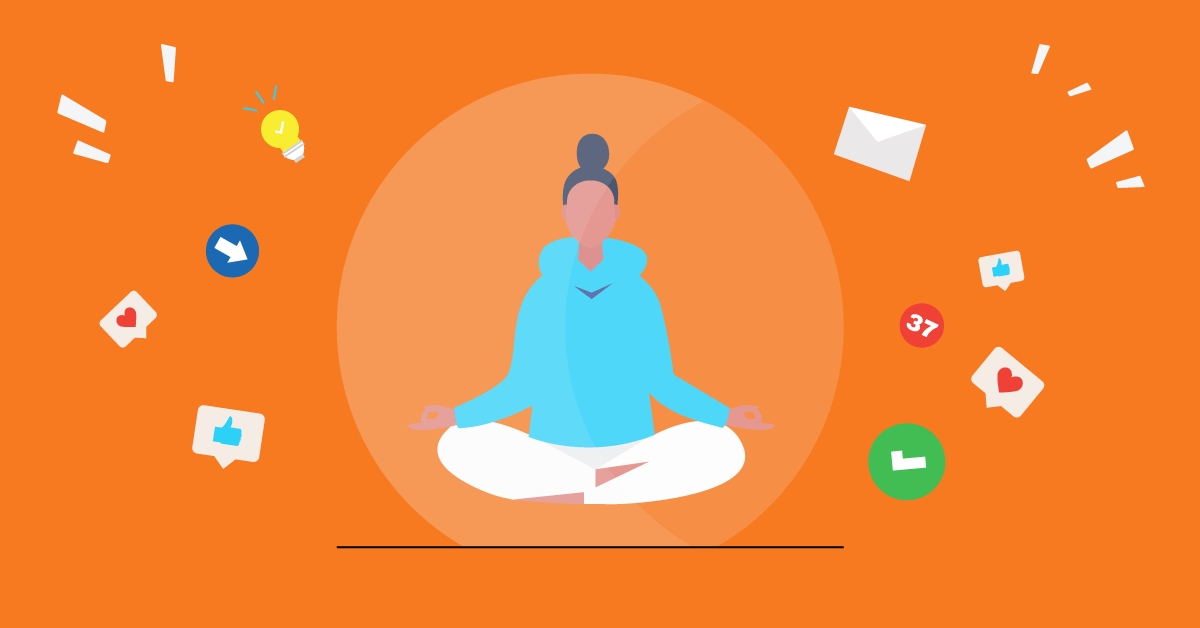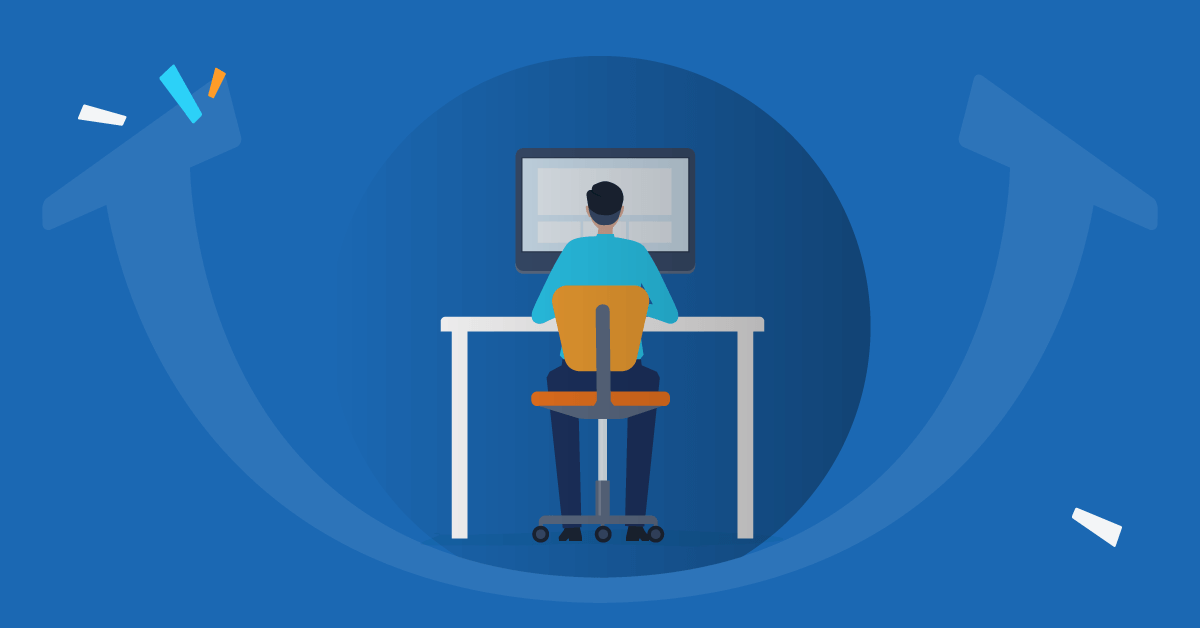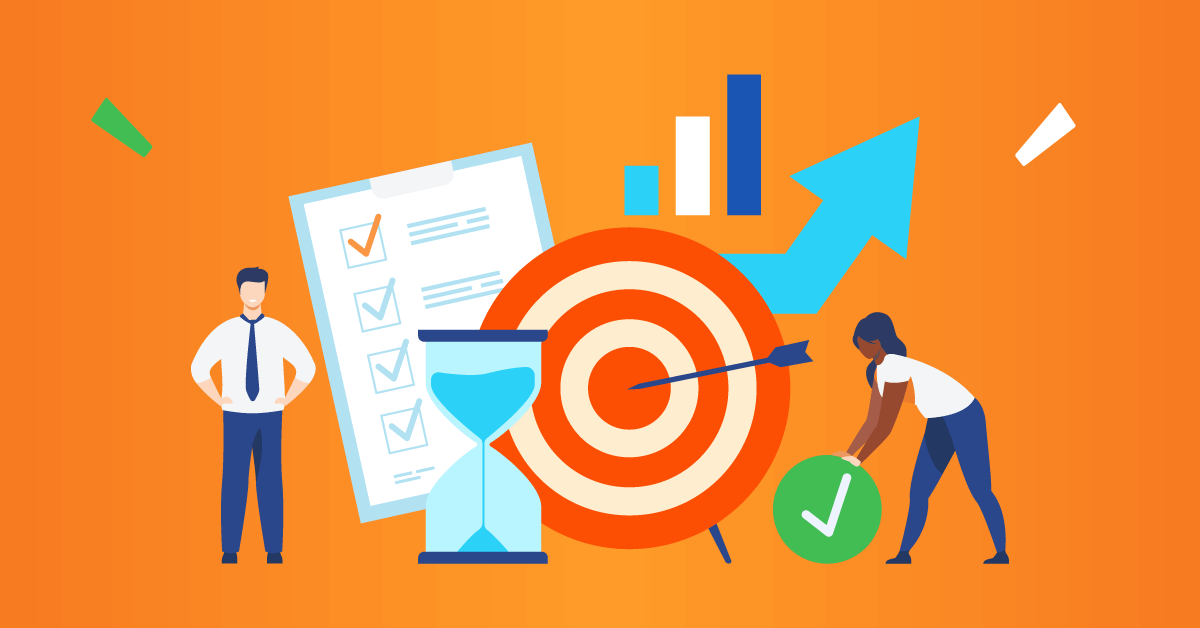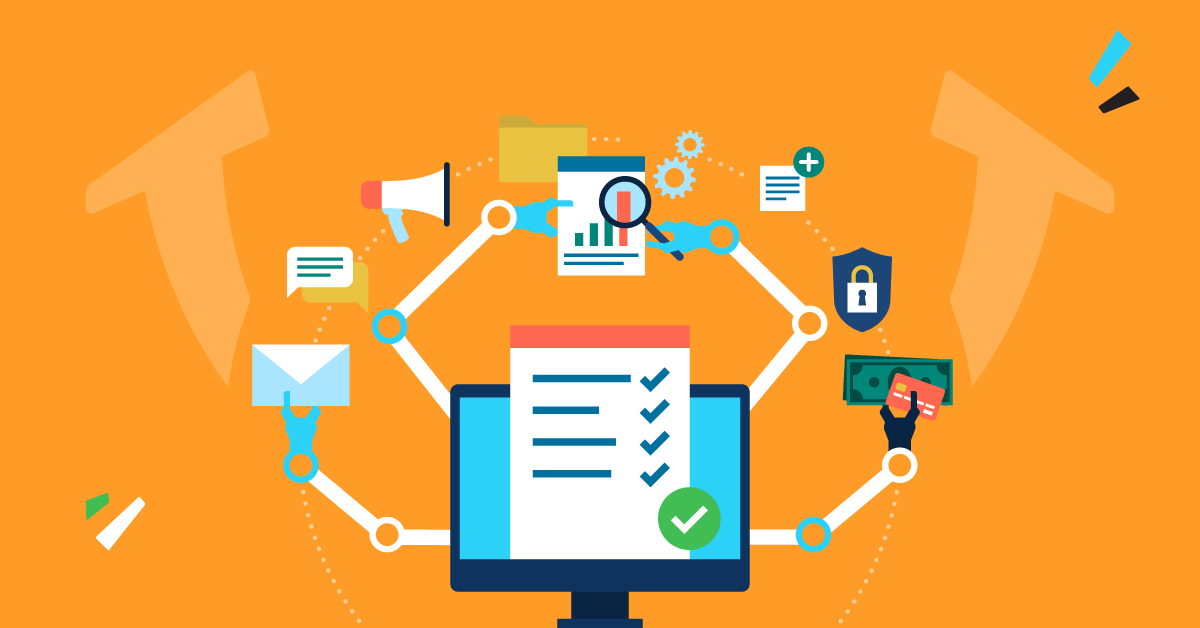Shelly has just returned to work after a refreshing, much-needed vacation.
During her time off, she decided to leave her smartphone and laptop at home. She only took an old mobile device with her, which doesn’t connect to the internet, in case of emergency. All that mattered was relaxing by the beach and enjoying her vacation.
Coming back to work, she felt truly rejuvenated after this break. But after a few minutes in, she was back to her old habits. Constantly checking her phone, multitasking, and even interrupting her flow every time she heard a notification buzz.
She managed to relax only when she went on a “digital detox” mode. But can Shelly—and all of us—deny tech?
In this modern world, we rely on tech for everything. And digital detox means “going back to primitive times” when we used our phone only for… making calls. We could follow Shelly’s example and completely disconnect while on vacation. But on our day-to-day, (how) can we achieve digital detox?
Taking a closer look at the paradox of digital detox
Digital overload has the potential to hurt our mental health, our relationships, and even our sleeping habits. But at the same time, we’re always talking about digital transformation, automating tasks, speeding up, and so on at work. We just can’t get enough of technology in this environment.
So, what’s in technology for us, and how does it affect our day-to-day life?
Virtual communication tools have allowed people to communicate instantly in various ways. In the workplace, businesses can operate seamlessly, no matter where their employees are located.
These tools have also made remote and hybrid work models viable solutions for organizations, as interactions can take place anytime, anywhere. File and data sharing can also happen online easily and securely, while clientele expansion worldwide is more possible than ever.
But at the same time, being always available for communication might hurt privacy and focus levels.
For example, employees use productivity apps to track their projects or organize their workload. So far, so good. But at the same time, these apps might distract them from their work. They often interrupt their workflow to reply to a comment or even jump in Zoom calls to discuss a roadblock.
And it goes beyond work-related tools.
Most of us have chat and social media apps installed on our phones. Even if an employee mutes notifications dring work, they will most likely take frequent breaks throughout the day to check on their messages or social media. While taking breaks from work are highly encouraged, having frequent interruptions to check whether they have new messages could truly disrupt their focus.
So, the question is, should they be using all these tech tools or not? And will an occasional digital detox have an impact?

Discovering the root of the problem
The issue is not technology per se.
Remember Shelly and her digital-free vacation? Surely, it was nice to lay by the beach and listen to the waves instead of email notifications. But after a couple of days, she started feeling left out.
Was she missing anything important?
Did she perhaps forget a deadline?
She wished she had her smartphone with her so she could log in and check her emails “real quick.”
From Shelly’s experience, it’s getting clear: It’s not the technology. It’s us. And our habits.
Technology has become a big part of our lives, and it will affect employees even if they don’t have access to it. So, if we can’t fight technology, could we create a healthier relationship with it?
How to reduce digital overload in a world that’s constantly on
In order to implement a digital detox policy at work, and avoid checking our inboxes all the time (before bed, during lunch break, and in the bathroom), there are a couple of things employees could benefit from and decompress from excessively using technology.
1. Keep all information in one place
Using a platform that allows integrations with various digital tools lets employees look for what they want in one place, and not all around.
Help employees spend less time trying to figure out where this folder is or how to do that task. They can achieve that by using an internal wiki or a platform to store training material and important docs that will be easy to navigate.
For example, if you use a platform to deliver employee training, make sure people don’t have to log in to different apps. To save time, they should be able to log in to one platform where they can find training videos and courses, join live videoconferencing sessions, and access post-training material.
Online courses. Live webinars. Follow-up quizzes.
Keep all your training in one place with TalentLMS.
The intuitive learning platform that users consistently rank #1.
2. Ask for feedback
If you don’t know where to start and wondering how to implement a digital detox culture at work, the best way is to simply ask your employees. Find out what types of digital tools they find distracting while working, how much time they spend on them, and how these affect their productivity.
After collecting this data, you can choose which software and applications is worth keeping or discarding for the sake of digital detox in the workplace.
3. Set communication do’s and don’ts
Employees shouldn’t be available 24/7, 7 days a week. There must be clear rules on how often and when employees can contact one another. Encourage your teams to avoid checking their emails or work chat platforms when they finish their workday, during the weekends, and on holidays.
At the same time, besides limiting employee communication outside business hours, it’s essential to promote a culture where employees aren’t obliged to reply to emails or instant messages on the spot. Forget micromanaging—allow room for your employees to fully concentrate on their tasks and let them reply within a reasonable timeframe.
4. Limit meeting time
“This meeting could have been an email.”
You’ve probably heard that before. And there’s a reason why.
Meetings can get too long and take a huge amount of productive time from your employees. In fact, according to a study by Harvard Business Review, “employee productivity was 71% higher when meetings were reduced by 40%.”
To promote digital detox in the workplace and allow your employees to spend more time off-screen, make your meetings shorter. Or ,if not possible, have frequent breaks during long meetings. You can share an agenda with your teams in advance to prepare them for what will be discussed and save time.
Another idea is to introduce a “no-meeting day” so employees can focus on their projects without any distractions.
Setting digital boundaries
A complete digital detox is not a realistic scenario in the modern world. But we could start by changing our habits and how we use tech. However, things won’t change overnight. Or by taking too drastic measures, like deleting all your apps from your phone, or going incognito like Shelly.
Each person can choose how they will decompress. But it’s essential for employers to create a healthy work environment that prioritizes mental health without compromising tech innovations.



